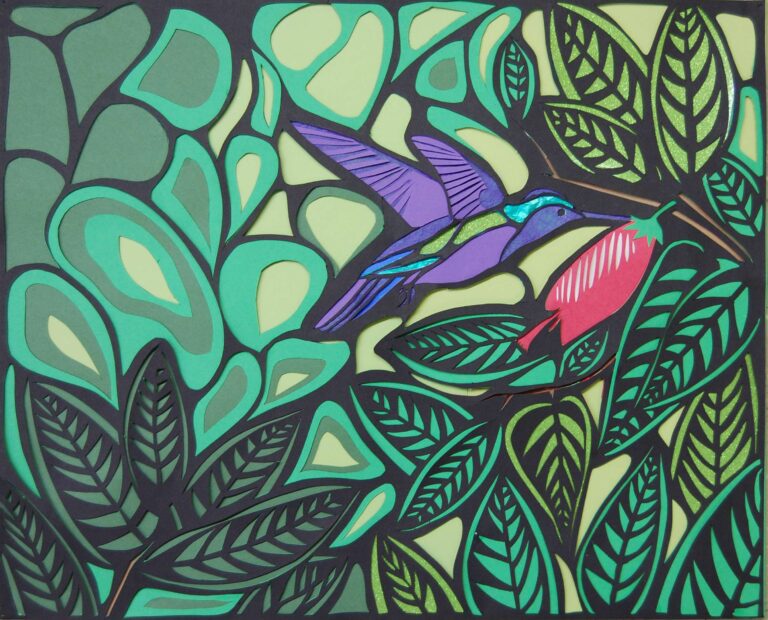Once in my career, I was asked as part of a school’s interview process, to come in and teach a lesson to an art class. I was given a little background on what the class had been doing and given a 45-minute period to present my lesson. The current art teacher and principal would observe. At that point in time, I had a few years under my belt and felt comfortable with high school students. I did a short presentation on artists who worked with value using a grid. I the work of Chuck Close and talked about how he worked from small parts to methodically construct large-scale portraits. I printed a black and white photo of a celebrity (I live in MA so I picked quarterback Tom Brady, then a player for the New England Patriots). The photo was gridded, cut into squares, and each student received at least one square to paint. The students were provided black and white paint in pallets, brushes, paper cut into larger squares, and a piece of the photo they were to reproduce. On the back of the photo, I wrote the coordinates which I had students immediately write on the back of their square. Students sketched the lines and shapes and then worked on matching and painting the values from the piece of the photo they were given. As they finished, they brought their painted pieces to an empty table where they gave them to me to place into the appropriate position. The students were excited to see the work start to form into a recognizable image. Some early finishers helped me arrange the final piece, and other early finishers took on an extra square, often a solid value for the background. By the end of the period, they had the gratification of seeing a finished collaborative piece.
I will add, that I did get the job. Here are some tips for anyone faced with needing to present a demo lesson as part of the interview process:
Do your homework
For this lesson, I did some preparation. I selected a photo of a person I felt the students would enjoy working on. I printed, gridded, cut up the photo, and labeled the back with the grid coordinates. I dialogue with the art teacher about the supplies I would use (palettes, paintbrushes, paper) and arranged to come in the period before to prepare my lesson and set up my presentation on the teacher’s computer with a slide show saved as a PDF. I knew how many students were in the class. I knew what class and grade I was teaching and the length of the period. Find out everything you possibly can and if you don’t have some information, try to be flexible with your lesson.
Investigate the guidelines
Some schools will give you a full period with students like what I experienced. Some may ask for a mini-lesson to take up anywhere from 5-to 15 minutes. Some schools may give you a specific topic to teach, others will let you pick. Sometimes you may be teaching your lesson to the hiring committee. During covid remote teaching, some teachers were asked to perform demo lessons remotely. Also, ask where the lesson will take place, who will be the audience, and what supplies are available to you.
Consider your time constraints
A common worry is about the time limitations you are given. As one teacher lamented, “I assumed they wanted kids to have made something by the end of it, but I really struggled with that because an appropriately leveled art project isn’t going to take 20-30 minutes to complete… usually my projects take at least two weeks to complete.” Let go of that idea. Sure, my lesson had a finished piece of work, but you definitely don’t need to have a completed masterpiece by the end. You are introducing a concept. Pick and choose what you can teach to fit that time frame.
Teach to your strengths
Think of something you enjoy and feel confident teaching. For example, I really love teaching Molas (check out my lesson here). When I teach Molas the lesson takes about two weeks. If I am given 15 minutes I might take a sliver of my lesson. For example, we “travel” from Massachusetts to the Kuna Islands (near Panama using Google Earth. This gives students a sense of the location where these indigenous people live who create Molas live. We look at the geography of the islands which is an archipelago (lean into the cross-curricular moment, everyone!). As the schools I’ve taught at in Massachusetts are coastal towns, we talk about the possible subject matters the sea might inspire and then look for that in the examples of Molas in my presentation. The whole 10-15 minute presentation, which is an actual lesson I teach, revolves around how artists use their environment to derive inspiration. The Kuna people found inspiration in animals, birds, fish, plants, and flowers. The Kuna people were inspired by all things that they encounter in their unique place in the world.
Connect with your students
Don’t simply lecture. Make the students active participants in your lesson. For example, in the Mola lesson, I asked students to make some educated guesses about the Kuna Islands. What do they imagine the weather is like and why? What type of animals might they encounter? All this leads up to brainstorming topics using their environment in New England as inspiration for a Mola-inspired design.
A demo lesson is essentially an audition for the art position. There is nothing like seeing a teacher in action to get a sense of how well you prepare a lesson, how you present yourself, and how you engage with students. They also look for how well your ability to manage a classroom.
Ideas from art teachers for a demo lesson
“I gave a presentation about trompe l’oeil. I showed examples of its application through art history and up to and including the present. I then provided wooden cubes (which I spray painted white, and had the students place on a white sheet of paper. White on white to study the shadows) and had the students draw them using graphite. It challenged students for the whole hour allotted. I got the job! ”
“Paintbrushes attached to 2 ft dowel rod/stick with large pieces of paper on the ground. You could use cheap tempera paint or watered-down ink. They draw standing up. Have them do gesture figure drawings or if you had access to the outdoors, they could do trees or plant life. Helps loosen up kids thinking about always having to be so perfect and precise when drawing.”
“I’d bring a set of cardboard viewfinders and have students draw a hand holding an object. Challenge students to make dynamic compositions by utilizing the viewfinders.”
“Teach students how to create a blind contour. Poke a pencil through the middle of a sheet of paper and have students hold the pencil with the paper resting above their hand, obscuring their view. Then you guide the students through creating a drawing of their free hand, concentrating on slowly observing detail while coordinating eye and hand together.”
“Another possibility for blind contour drawing is to have student hide their drawing hand in a lunch paper bag and use gold pencils to draw their posed hand using bling contour; they open the bag to see how they did.”
“Polaroid watercolor/ink paintings. Simple, quick, fun results and kids really enjoy making them. Inexpensive watercolors and sharpies are all you need.” You can focus on foreground/background or gradients.
“The forgery challenge. A great drawing exercise that challenges students to think about line quality.”You can find an example of this challenge on YouTube. It reminds me of the well-known famous upside-down Picasso drawing exercise from Betty Edward’s Drawing on the Right Side of the Brain book and workbook, which has a lot of great exercises you could utilize for a demo lesson.
“For middle school, teach symmetry with ‘Name Abominations.’ Students fold a paper the long way and write their names in larger print on the crease. You then cut out your name keeping that edge. Open up your name and turn the shape into whatever creature you see.”
“A starry night parody. I do this with my 8th graders. Hive them a 9×12 paper. Introduce Van Gogh’s Starry Night. Go over what a parody is and invite them to can create one with oil pastel. It would just be a quick one, but still fun and successful.”
“Introduce the concept of negative space. I give out my classroom set of scissors, one to each student. I define what negative space is and ask students to brainstorm things that have negative space in the classroom (key chain, mug, art stool, etc). Then we talk about the negative shapes located in the scissors I handed out. We identify and draw the round hole in the scissors first. Then we identify the next one and talk about thinking about its size and distance from the first negative space. This goes on on on until we complete the drawing. If time allows we shade in the negative space.”





